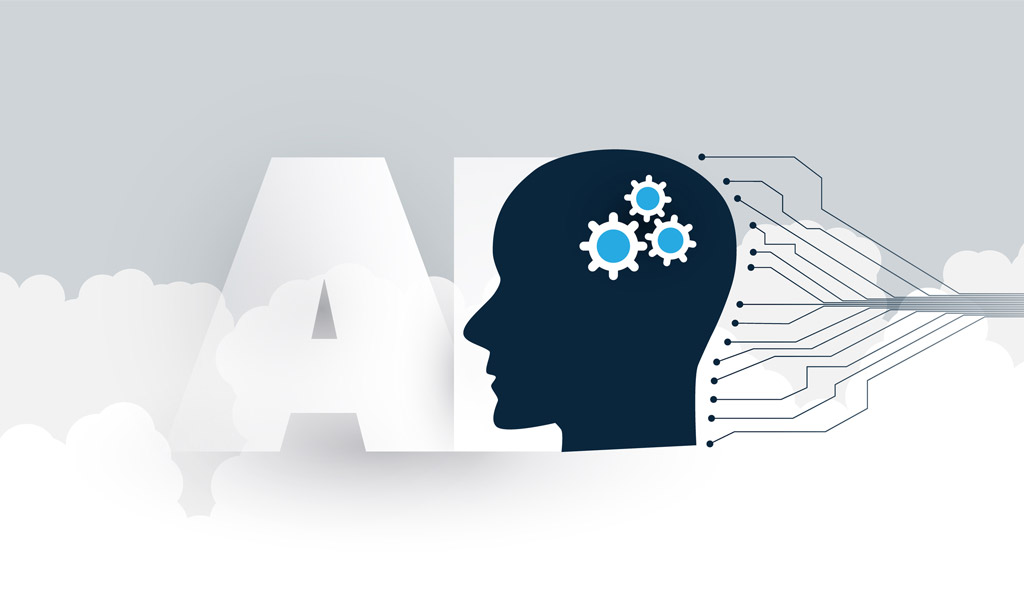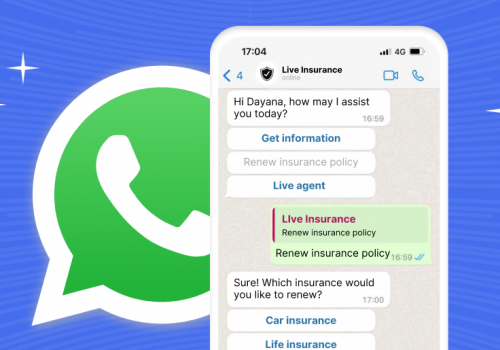Real-Time AI-Powered Problem-Solving Agents. If you asked a random sampling of CEOs to name the top three things changing the business landscape today, AI would always be in there. AI is changing how we do our jobs, how we engage with brands, and what we expect from our customer experiences.
When it comes to customer service, AI is already playing a huge role in shaping the sector’s future. As we continue to advance our AI capabilities with cutting-edge machine learning and deep learning technologies, AI is set to get even more powerful.
But what will AI look like in the future? Will we have AI customer service agents? Yes, we will. But that doesn’t mean human agents won’t play a part either. People have lots of skills AI doesn’t have, primarily soft skills, and these skills are becoming more economically valuable in the workplace every year. When we combine AI with problem-solving agents, we get a truly potent mix of skills that can take any company to the next level.
Why AI is the Future of Customer Service
24/7 Availability
We live in a 24/7 world where flexibility is a key commodity. Gone are the days where someone would only work 9 am to 5 pm, Monday to Friday, for their whole working career. Today, workers value flexibility in all areas of their life, including work. And workers are also consumers! Your customers want to be able to contact you at 10 am on a Monday, or 3 am on a Tuesday, or any other time. If they have a problem, they want you to be available to fix it. We also live in an increasingly global world. 20 years ago, your customers would mostly come from the same region, so your opening hours only need to align with this region. However, today, companies offer products to customers worldwide, and these customers live in completely different time zones.
AI can provide 24/7 availability because bots don’t need to take vacations or have scheduled breaks. They can be online when your customers are online, no matter what time that is. This is why chatbots are so powerful. Chatbots transform your company into a customer-centric always-online company, no matter your operating hours.
AI knowledge bases also promote 24/7 availability because they allow agents to access critical business information even when experienced employees aren’t working. In the past, if an agent was struggling with a complicated customer problem, they would have to wait to speak to a more senior employee. That could mean waiting until the next day, or even several days. In 2021, these employees can share their wisdom with knowledge bases and make it available for any agents who need it.
Speedy Solutions
When certain aspects of the customer service function become automated, customers experience shorter wait times. Long wait times have a dramatic effect on customer satisfaction, so driving them down has always been a top priority for businesses.
In terms of customer expectations, wait times typically vary based on the communication channel. For example, customers are willing to wait longer for an email response than they would be on live chat. However, regardless of the channel, there are always expectations you have to meet or risk frustrating your customers.
- 94% of customers expect a response via email within 24 hours. Nearly half (48%) expect a response within 6 hours.
- For live chat, 96% of customers expect a reply within five minutes, and 80% expect a reply within 2 minutes.
- For phone communication, customers expect to wait no more than 5 minutes to be connected with an agent. Additionally, a whopping 29% of customers said they wouldn’t wait more than one minute.
Resource Management
One of the major perks of AI is in how it improves agent resource management. When AI handles the majority of simple customer issues, agents are freed up to focus on more complex problems. Human agents are excellent at problem-solving, and it’s a waste when they have to put all of their energy into simple problems. Additionally, the more complex problems agents solve, the better they become at problem-solving. Critical thinking is a muscle in the same way that your triceps are a muscle. If you aren’t using your arms much, your triceps become weak, and you struggle to lift heavy objects when you need to. The same is true for problem-solving. By engaging in problem-solving frequently, you develop new pathways in your brain and strengthen your ability to arrive at the right solution next time.
Also, in resource management, AI is great at routing the right problems to the right agents. Agents are a varied bunch of people with their own unique experiences, skills, strengths, weaknesses, company knowledge, and education. With AI algorithms, the software can determine which agent is best suited for a particular problem. Depending on how advanced the AI is, many different factors can be taken into account. For example, the system might rely on human-defined parameters (Agent B is good at X problem), or the AI might analyze agent performance to find the best fit.

How AI is Being Used in Customer Service in 2021 to Offer Smarter Customer Experiences
Emotion Analytics
People convey emotions both verbally and non-verbally, and AI is starting to get really good at recognizing the variety of emotional tells. On the phone, AI can analyze tone, word choice, talking speed, and more to determine what mood the customer is in. It can then use this information to route customers to the most appropriate agent. Of course, not all contact centers are using this powerful technology today. Still, many are, and emotion analytics is set to become a major aspect of contact centers in the future. Today we most commonly see emotion analytics on chatbots, where the bot can determine sentiment via the customer’s choice of words, emojis, and so on.
Automated Responses to Social Media Messages
Social media is a great way to connect with customers in real-time but being active on social media 24/7 can be challenging. For public social media interactions, like Tweets, these are better left to humans. However, many businesses today are using automated responses for social media messages. For example, let’s say a customer Tweets your company saying they’re having a problem with a product. You can compose a reply over a direct message asking for their customer reference number, account name, and so on. With Facebook Messenger, the opportunity for automated responses is even greater because of the AI chatbots. If you haven’t set up automated responses on Facebook Messenger yet, now is the time. Why? Because on your Facebook business profiles, users can see your average response time. If your average response time is long, customers may feel dissuaded from contacting you.
Predictive Personalization
Predictive personalization engines analyze a range of customer data to determine which customers are likely to churn in the near future. Armed with this information, companies can offer personalized retention experiences.
Predictive Maintenance
Predictive maintenance systems can detect IT issues before they occur and save contact centers time and money. Downtime is extremely costly for businesses, not just for the damage it causes in the moment but also for damage to reputation. If a customer can’t reach your company because your servers are down or many agents are offline, they will be left with a negative impression. This negative impression isn’t easily fixed, especially if it was that customer’s first interaction with your customer service function.
Humans and Bots Working Together
Sometimes called AI-augmented messaging, this is where bots and humans work seamlessly together in a chat window. The bot can start the conversation with the customer, asking simple questions. At some point in the conversation, if the bot gets stuck or the problem turns out to be more complex in nature, the bot can hand it over to a human. In 2021, this process is seamless, and the customer won’t know they’re conversing with both a bot and a human. In the past, the bot would go through an exhaustive list of questions before saying, “I’ll hand you over to a human agent”. This can be jarring and frustrating to customers because they’re left with the feeling that they wasted their time talking to the bot.
Automated Ticket Generation and Tagging
AI is great at collecting, analyzing, and organizing data, which is why it’s excellent at ticket creation. AI algorithms can analyze keywords in a customer query and generate a new ticket with the appropriate tags. The agents with the most appropriate skillset can then be assigned tickets with those tags.

Improving Agent Productivity and Job Satisfaction
Studies have found that disengaged employees cost US companies an eye-watering $550 billion a year. Why? Disengaged employees don’t work as hard, don’t have as much energy, and have reduced problem-solving skills. When employees don’t feel they belong at the company, they are less invested in doing a good job. This all happens on a subconscious level, with most employees not realizing they aren’t working to their true potential.
So, how can AI help? With AI-driven technologies, agents become empowered to work on customer problems that best match their skills. A major part of being an engaged worker is feeling competent at your job. When you successfully solve problems and get positive feedback, you feel more motivated to get onto the next work.
Here are the other ways AI helps improve agent happiness:
- Reducing human errors: AI can catch errors before the customer sees them. Human error can cause negative customer experiences and sometimes lead to incorrect data in customer profiles, leading to subsequent problems later down the line.
- Call prioritization: Routing the right agents to the right problems for them.
- Smart monitoring: AI can detect when an agent needs more training in a certain area. For example, an agent might have a high-resolution rate for certain customer problems but a lower than average rate for others.
Gamification
In a contact center, gamification can mean scoreboards, digital trophies or stickers, and more. Gamification can make the job fun and promote healthy competition between agents. The key here is not to go overboard and make the agents feel pressured to perform to win digital prizes. Instead, it should be a fun way to connect with colleagues and experience a visualization of their performance. Prizes can also be physical things like free parking, extended breaks, free lunch, and so on.




















